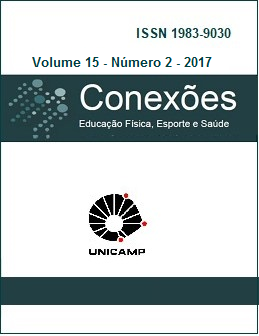Abstract
The main corrections, about the technical movement process in dance comes, mostly, from an
external figure known as the choreographer or conductor. In this study it is proposed the use of
autoscopy as a self-analysis method and self-feedback where the dancer performs himself to
watch his performance. This study was made from shootings of a pas de deux choreography
(duet in classical ballet), with two different ballerinas and one single male dancer which had
micro cameras fixed on his body. After dancing, each dancer was invited to individually
verbalize a self-analysis. Subsequent to this first moment, the dancers watched their
performance from the images captured by the micro cameras, similar to the dancer's view, being
requested to each dancer to make a second self-analysis of your performance. The self-analysis
made with and without the use of autoscopy were compared. The purpose was to interpret if the
autosocpia presents itself as an efficient support in the improvement on the technical movement
process in dance. Thus, after the intervention, it was observed that using the method contributes
to broadening the perception of motion of the dancers due to the video recording recourse that
allows the development of self-analysis and self-feedback capacities.
References
CAMINADA, Eliana. Historia da dança: evolução cultural. Rio de Janeiro: Sprint, 1999.
COHEN, Selma Jeanne. International enciclopédia of dance. Oxford: Oxford University Press, 2004.
FERREIRA, Manuel Domingos Casinhas. A importância da cinestesia na aprendizagem e desempenho das tarefas motoras. Educação & Comunicação, n. 3, p. 26-33, jun. 2000),
FERRÉS, Joan. Vídeo e educação. Porto Alegre: Artes Médicas, 1996.
GRESKOVIC, Robert. Ballet 101: a complete guide to learning and loving ballet. Minnesota: Hal Leonard Books, 2005.
LINARD, Monique. Les effects Du feedback par television sur le processus enseigner-apprendre en situation de groups-classe. Bulletin de Psychologle, v. 28, n. 316, p. 9-12, 1974.
MARZANO, Michela. Dicionário do corpo. São Paulo: Loyola, 2007
NAUTRE, C. Etude sur l’utilisation de l’autoscopie video en formation permanente au Groupe Esc Lyon. In: Cycle de Management des Ressources Humaines à I’institut de Gestion Sociale de Lyon, 3., Stage Février/Mars (Spéciel). Lyon, France, 1989, p. 1-41. (Mimeo).
SADALLA, Ana Maria Falcão de Aragão; LAROCCA, Priscila. Autoscopia: um procedimento de pesquisa e de formação. Educação e Pesquisa, v. 30, n. 3, p. 419-433, set./dez. 2004.
The Conexões: Educação Física, Esporte e Saúde Journal uses the license of Creative Commons (CC), thus preserving the integrity of articles in an open access environment.


